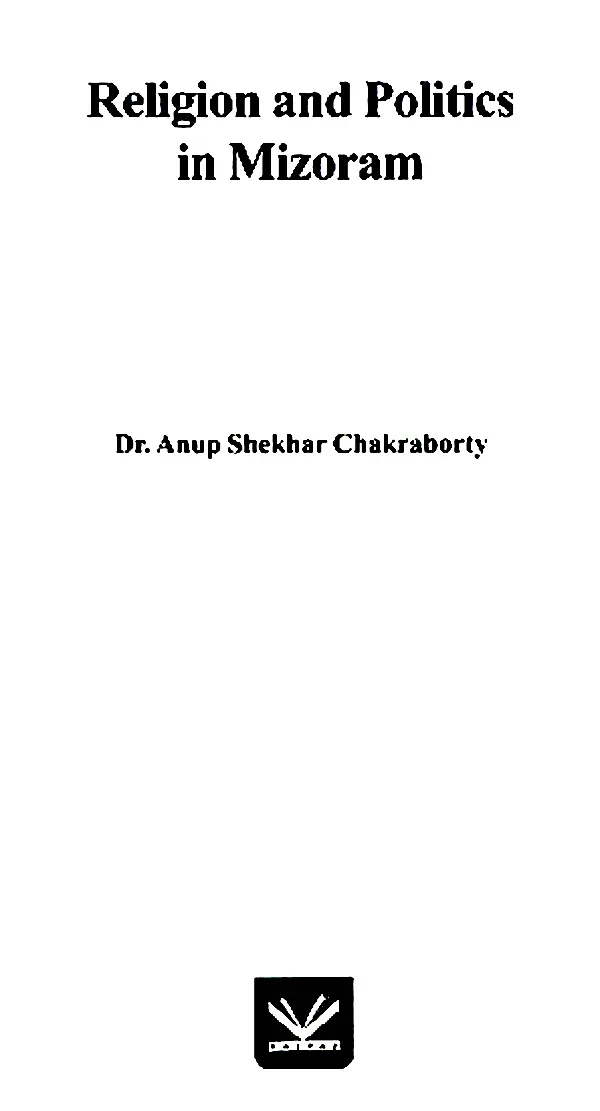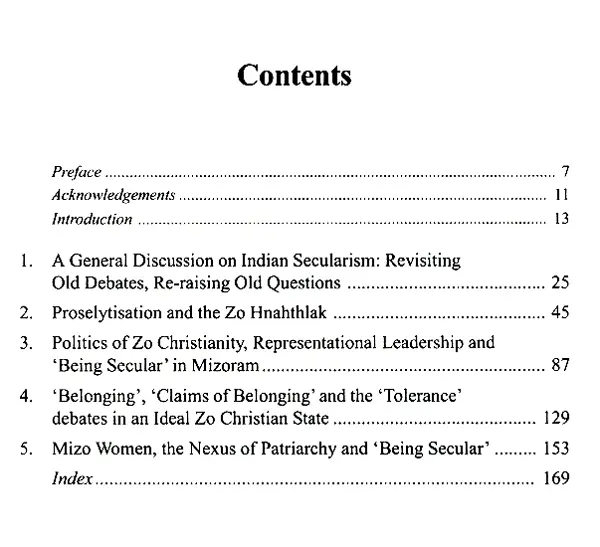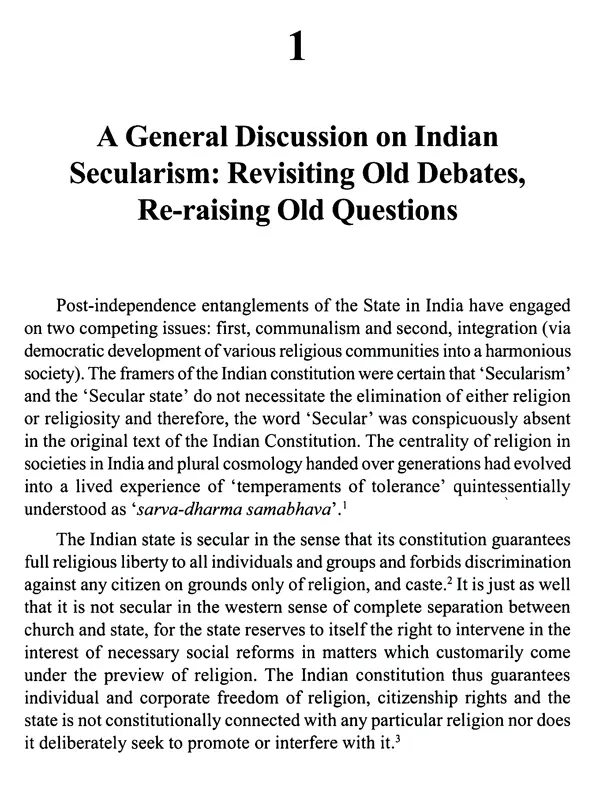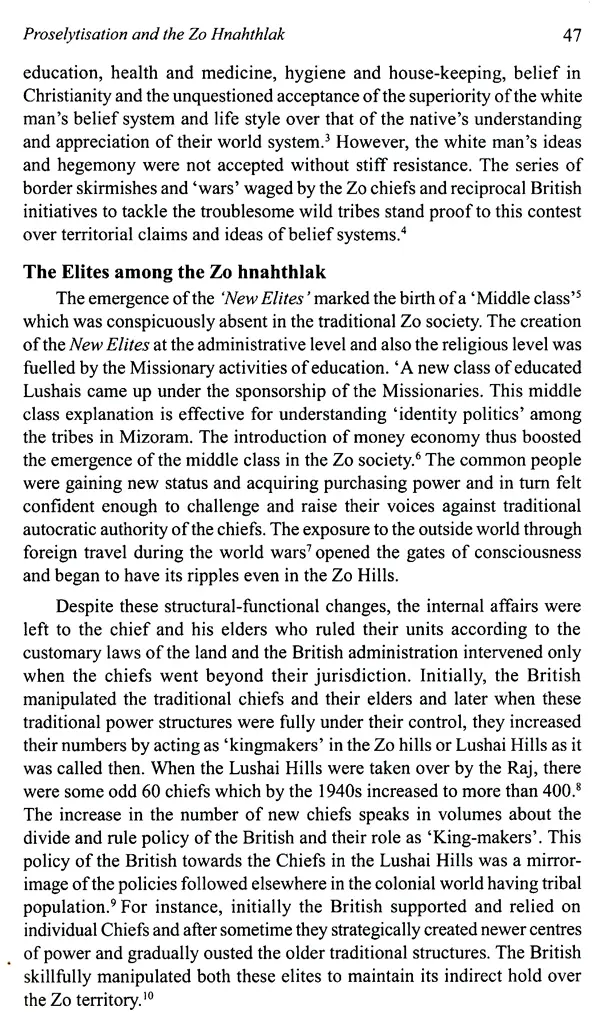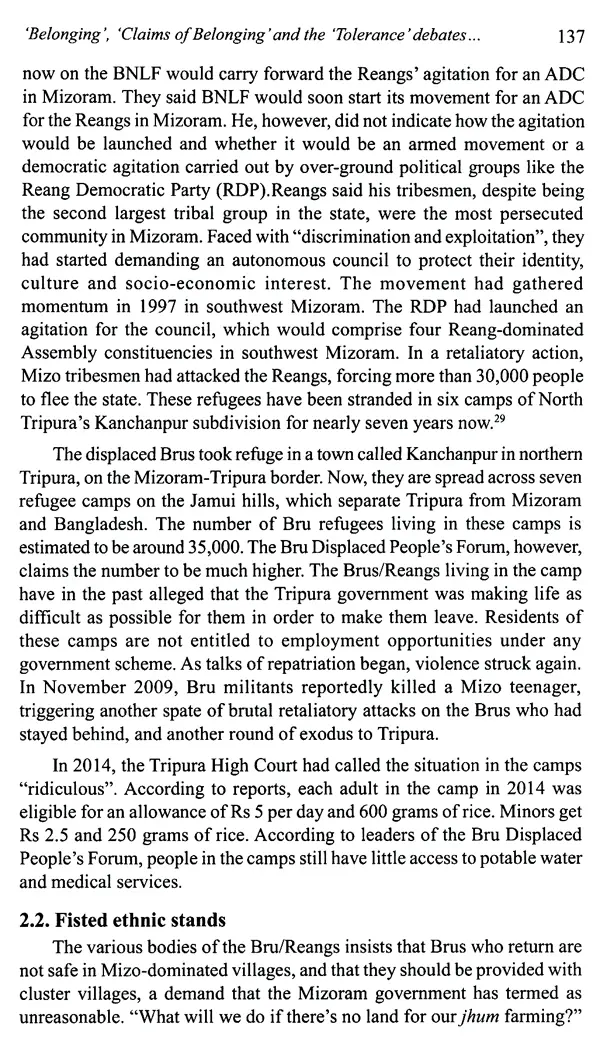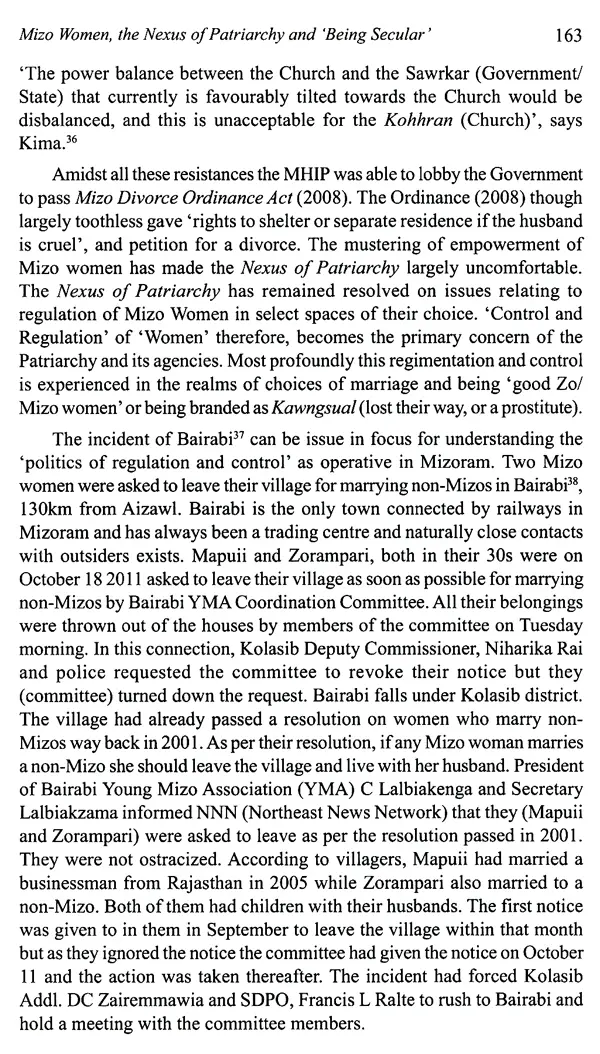
Religion and Politics in Mizoram
Book Specification
| Item Code: | UAM764 |
| Author: | Anup Shekhar Chakraborty |
| Publisher: | Kalpaz Publications |
| Language: | English |
| Edition: | 2020 |
| ISBN: | 9789353240561 |
| Pages: | 176 |
| Cover: | PAPERBACK |
| Other Details | 8.50 X 5.50 inch |
| Weight | 200 gm |
Book Description
He represented India at the CODESRIA/SEPHIS 'Workshop For Young Historians' (Dakar, Senegal) 2006. He was awarded the India Social Science Research Award 2009 by Canada's International Development Research Centre (IDRC), Digital Empowerment Foundation (DEF) and India Development Foundation for his research work Politics of Social Exclusions and Inclusion in Mizoram in the social inclusion category and judged 'one of the top ten best research efforts. He received the prestigious CR Parekh Fellow (2011-2012) at Asia Research Centre, London School of Economics & Political Science for his post doctoral research initiative titled: Contested Landscape And Befuddled Public Sphere. Media, Democracy And Public Participation In Darjeeling Hills. He has to his credits several publications dealing with interesting aspects of North East India in renowned journals like Journal of International Warner's Studies (JIS), Indian Journal of Political Science (IJPS), Identity Culture and Politics (CODESRIA) cts. He authored Politics of Autonomy & Ethnic Cocooning in Mizoram (2015, New Delhi: Authors press) and Hegemony To Hyphenation: Hybridization Of Identities And Politics In Mizoram (2015, Darjeeling: St. Joseph's Publication). He also co-edited (with Padam Nepal) Politics of Culture, Identity and Protest in North-east India (2012, Vol. 1 & 2. New Delhi: Authors press) and (with Padam Nepal) Politics of Exclusions and Inclusions in India: Construing Commonalities and Complexities (2016 New Delhi-Authorpresal).
Chapter 2 titled Proselytization and the Zo Hnahthlak; Chapter 3 titled Politics of Zo Christianity, Representational Leadership and "Being Secular in Mizoram, Chapter 4 titled 'Belonging. 'Claims of Belonging' and the Tolerance' debates in an Ideal Zo Christian State; and Chapter 5 titled Mizo Women, the Nexus of Patriarchy and 'Being Secular" attempt to present narrations that run contrary to the imported ideas of relations. between religion and politics as evolved in the west. This book is an attempt to share practices that have been engineered among communities in South Asia to untangle the webbed relations between religion and politics; and in doing so construe the 'formal' and the informal ways in which religion and politics contradict, and complement and circumvent each other in the everyday. The idea of secularism and being secular in South Asia indeed opens interesting arenas of debates and contentions. India in special remains a spectacle in the operation of secular politics amidst a cacophony of religiosity and religiously informed 'believers'.
Drawing largely from my earlier writings on Mizoram I would re-raise old questions which have haunted generations and communities elsewhere and pin them to the Zo context: what does being 'secular or being 'non secular" or "asecular" mean among the Zo hnahthlak? Does the notion of secular get cornered by the profound expression of Zo-Christian religiosity?
The very term "Mizo', 'Mizoram' just like the term 'North-East' evokes in the minds of the mainland Indians an 'alien culture', Chinkys, backward tribal, Christian tribal, 'Open sex societies', underdeveloped area, forests, junglees' (Wild, Uncivilized), tribes with weird food habits infamously known as the "dog-eaters' and so on. Beyond these stereotypical images of the people of the North-East and especially the Mizo, mainland Indians are perpetually perplexed by the external features of the people of the region and club them into a neatly compartmentalized category of 'Chinkys', or Chinese, totally bypassing their identity as Indians and pushing them at the realms of the final Other'. The underlying realities of Politics in Mizoram," more specifically the construction of identities, its contestations and the associated 'Politics of Silencing' which exhibits its expressions in the from exclusions and inclusions-justified in the name of 'State-Building, hardly echoes beyond the Zo tlang ram. The outside world beyond the Zo Hills are hardly aware of the underlying politics of identity, culture, space, 'continued colonization' and 'internal colonization,' patriarchal hegemony, religious persecutions and also of state-led 'victimization of the marginalized-women and others".
The North-East in general has been experiencing the need for re-drawing the boundaries into North Eastern territorial zones and spaces? i.e. re marking the geo-politics based on the logic of traditional game land that the people had lost due to the British and other external forces. The people of North-East India, specially the tribal people, differ from the plains people of India in respect of culture, customary behavior, faith and race. What Ananda Bhagabati calls the distinctive "geo-ethnic character" of the Northeast is helpful in clarifying the multicultural nature and the cultural differences between the people. The region's population is conveniently classed as "tribals" (referring to those in the thinly-populated hill areas) and the "non-tribals" (referring to the people in fertile plains and plateau), however, this misconstrues the larger complexities and over-lapping’s of 'hills-plains divide and waves of Sansktitization and animism interface as operative in the region, given that tribal communities also live the plains and so do the non-tribals in the hills. The anxiety that looms a large over tribal people of the North-East as elsewhere has been 'how to preserve their culture and pristine identity(ies)","
**Contents and Sample Pages**
